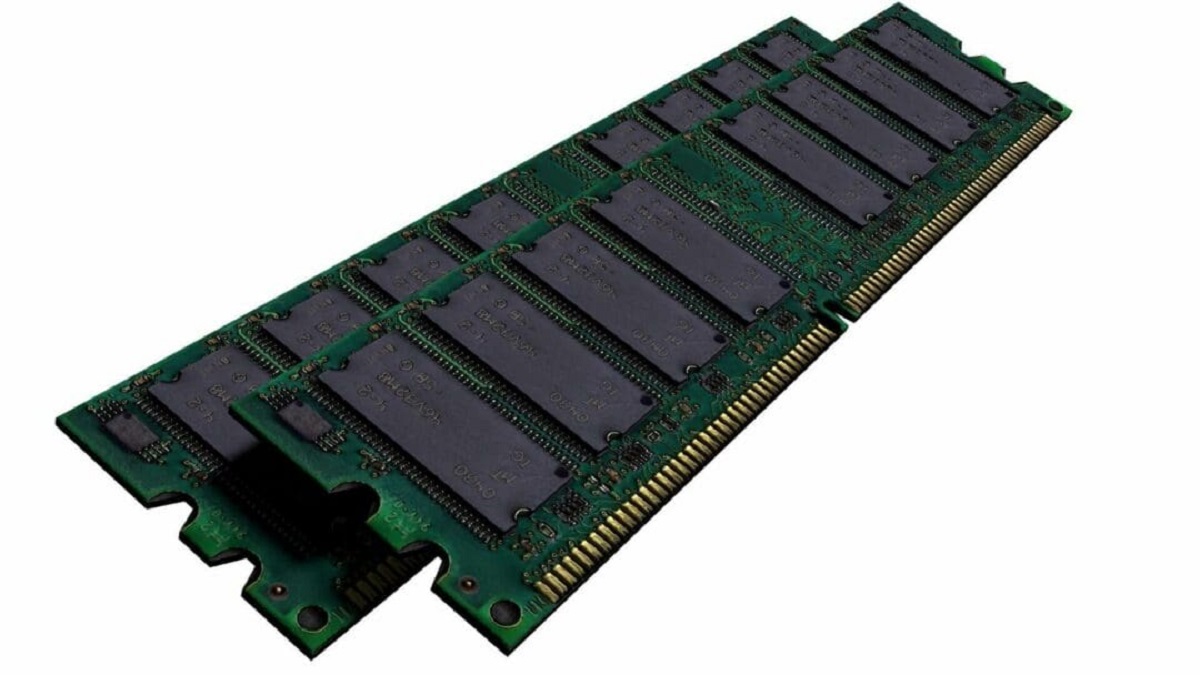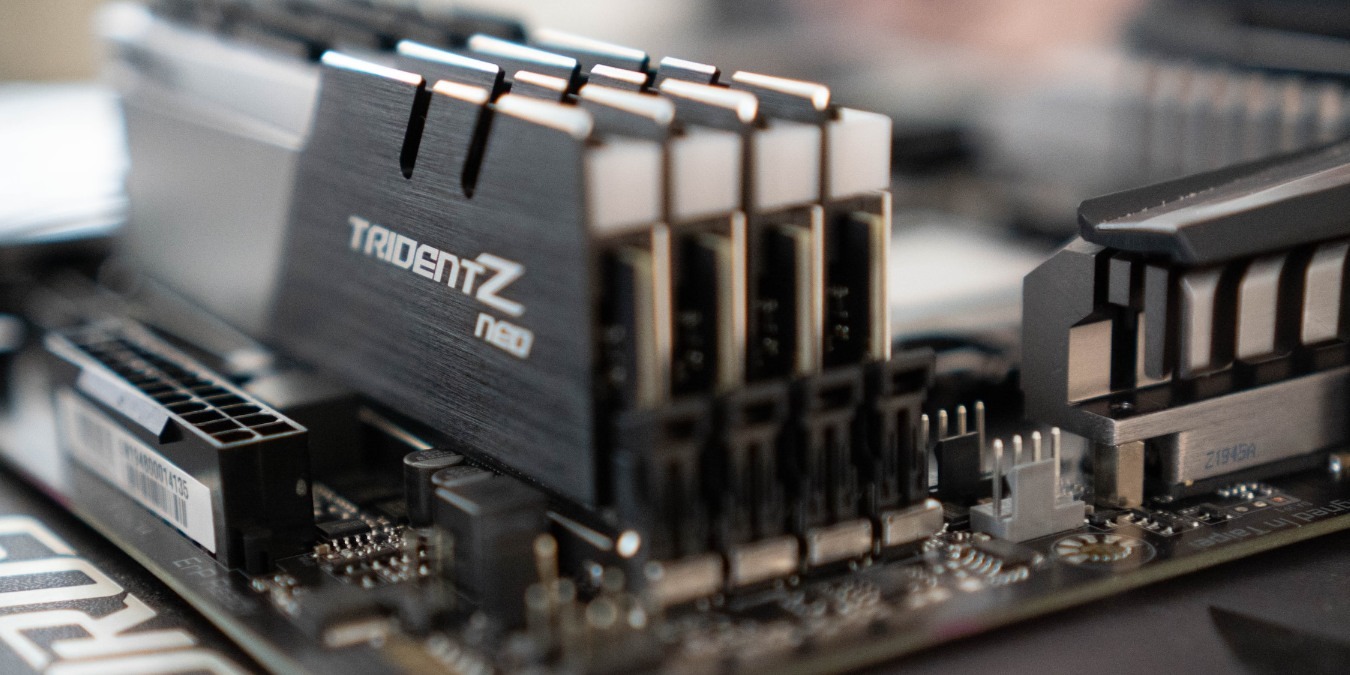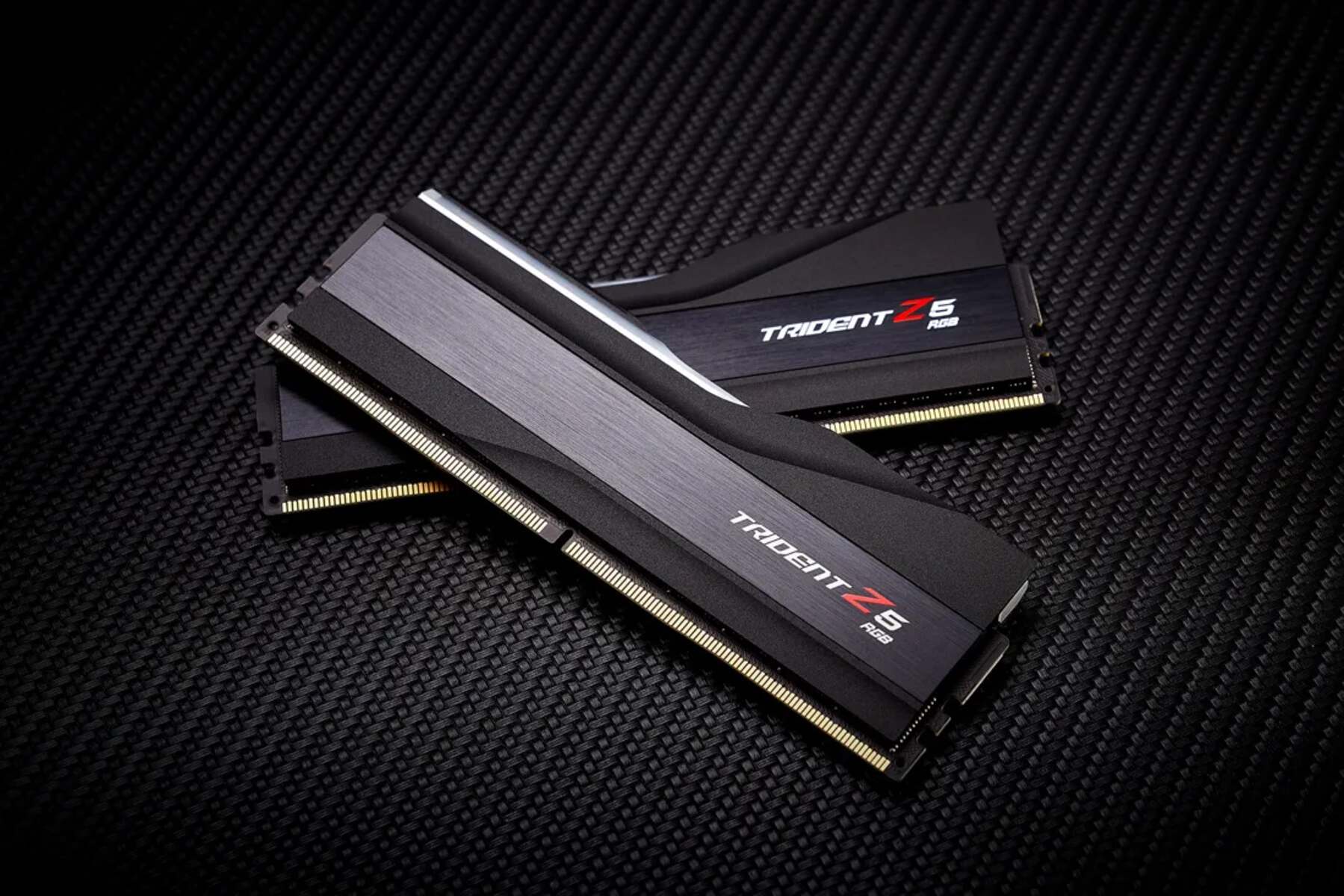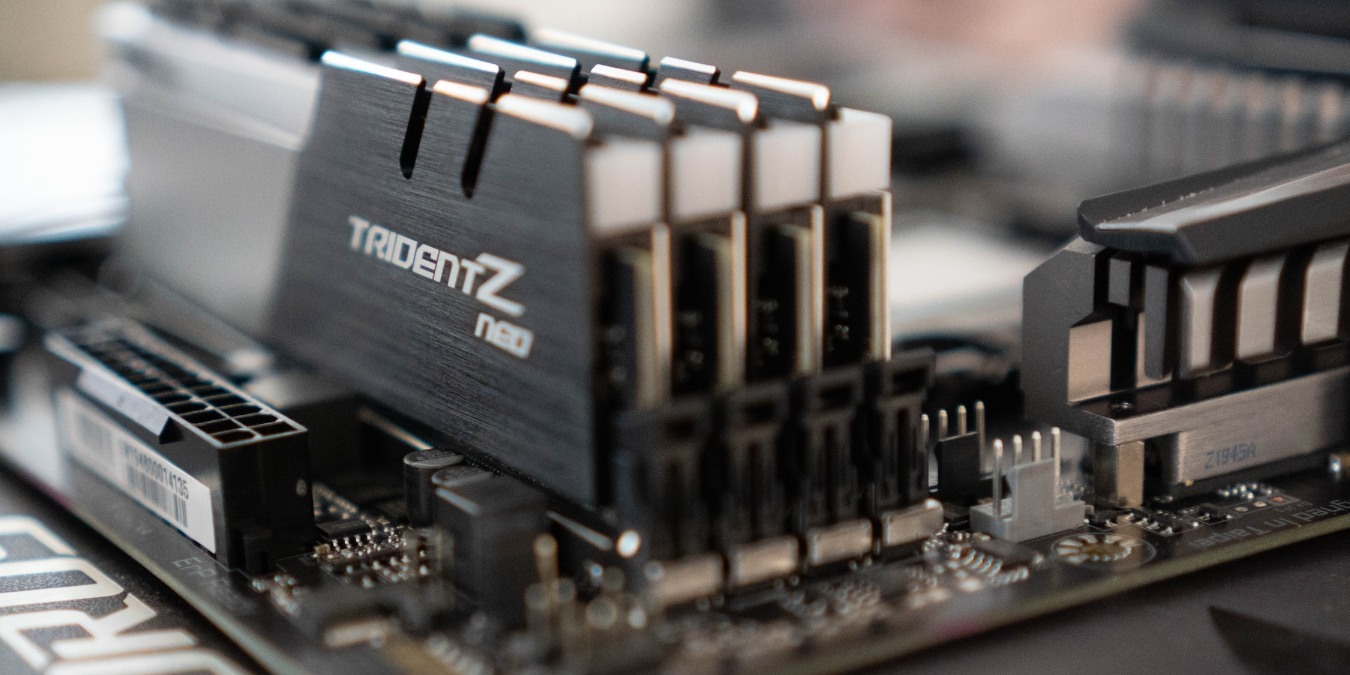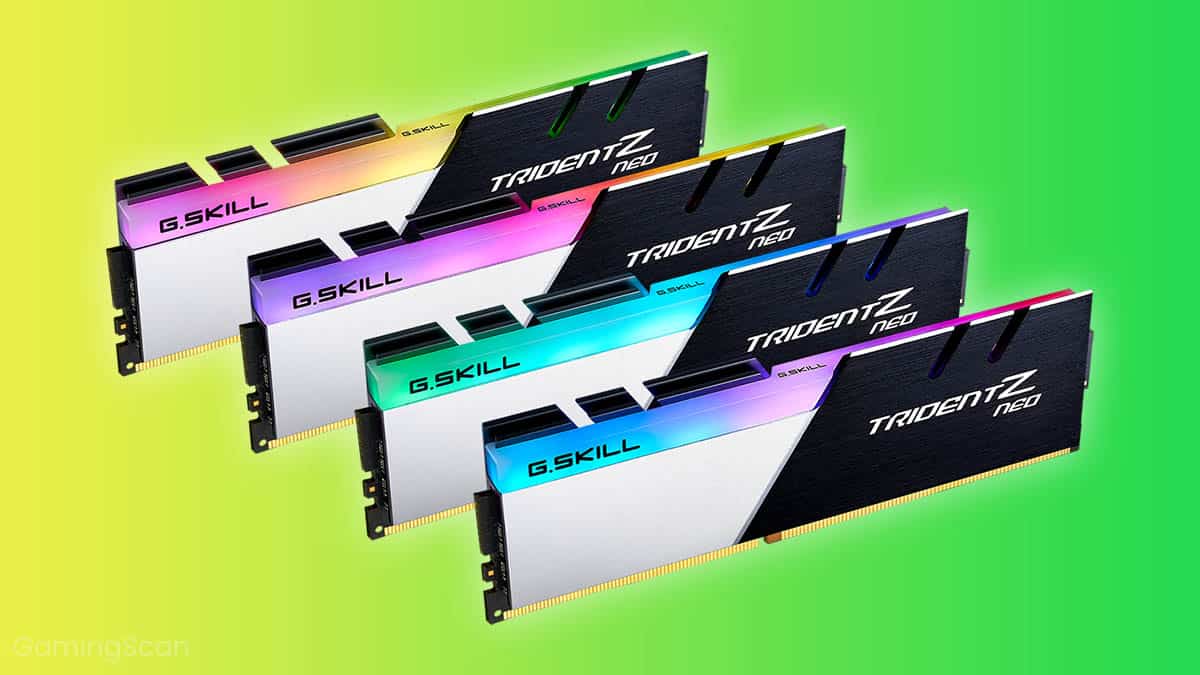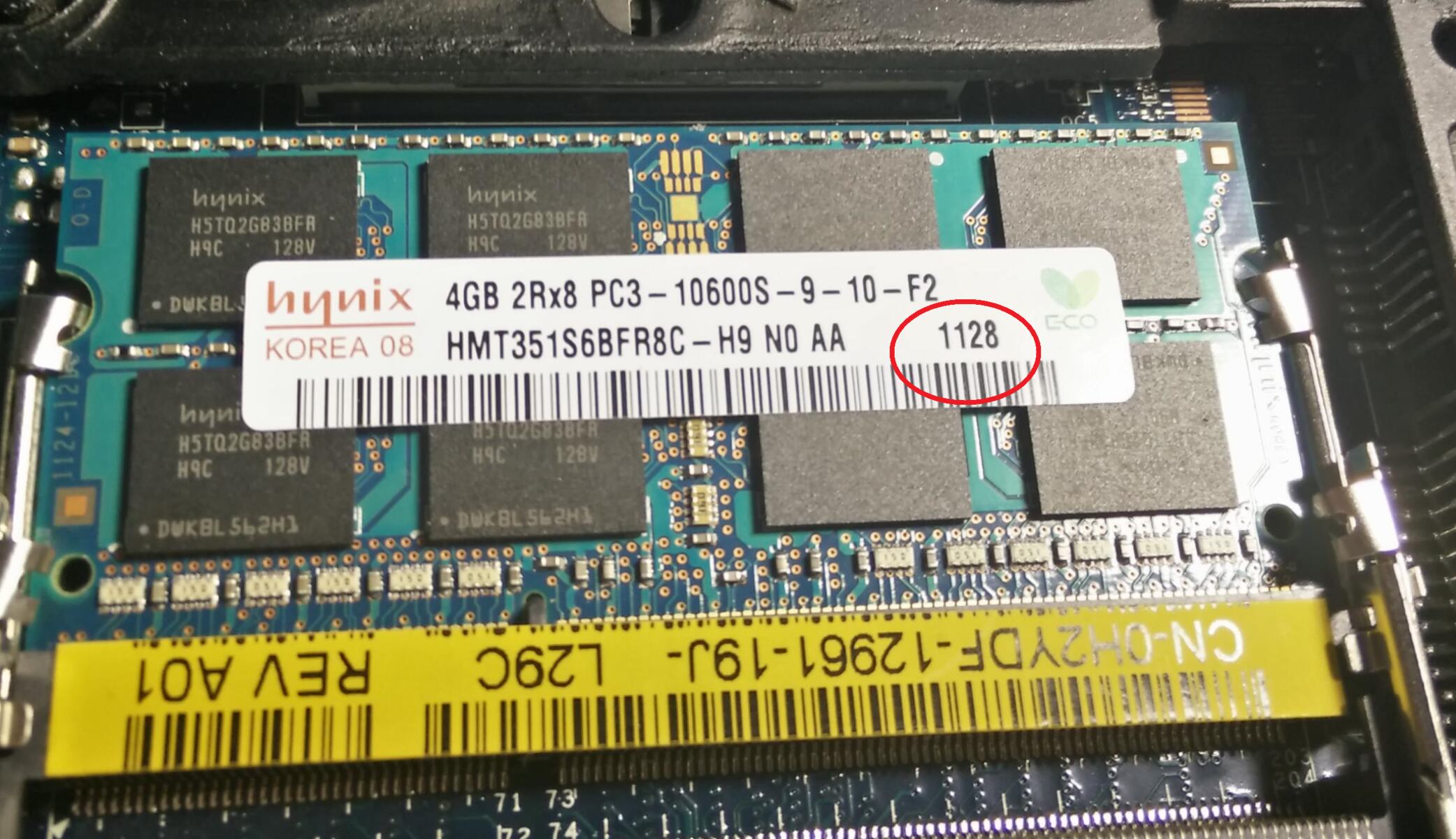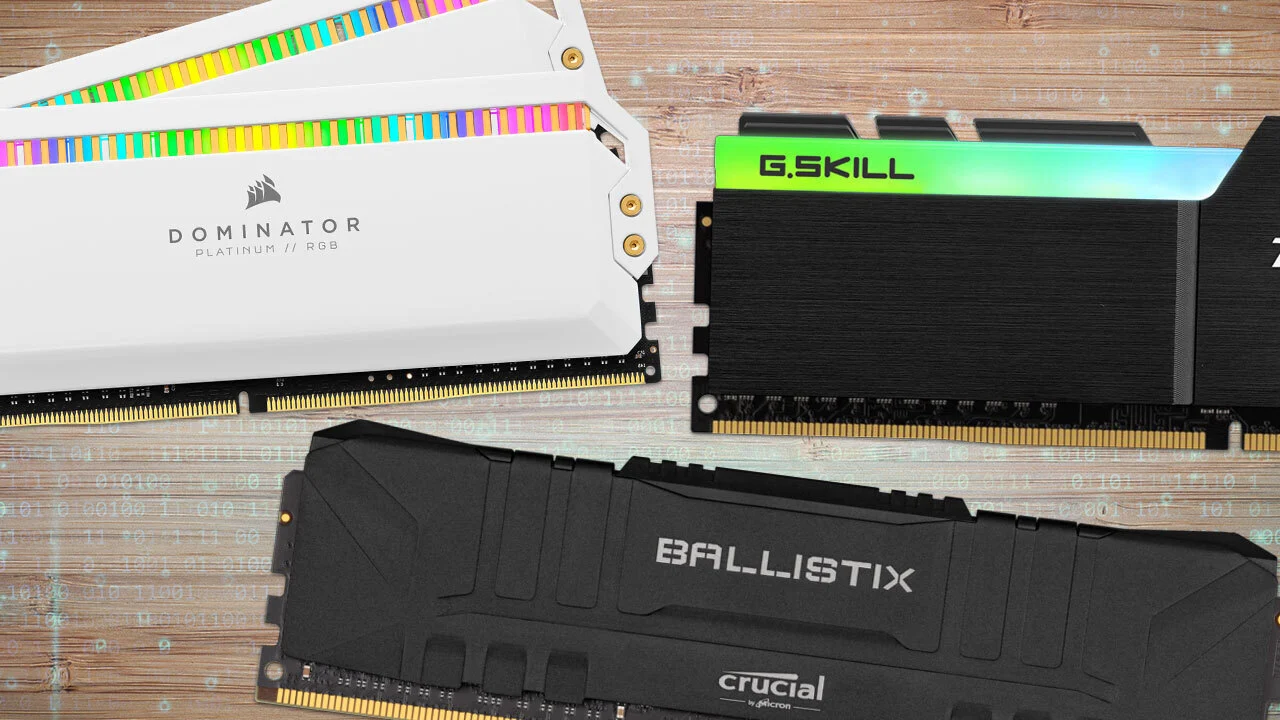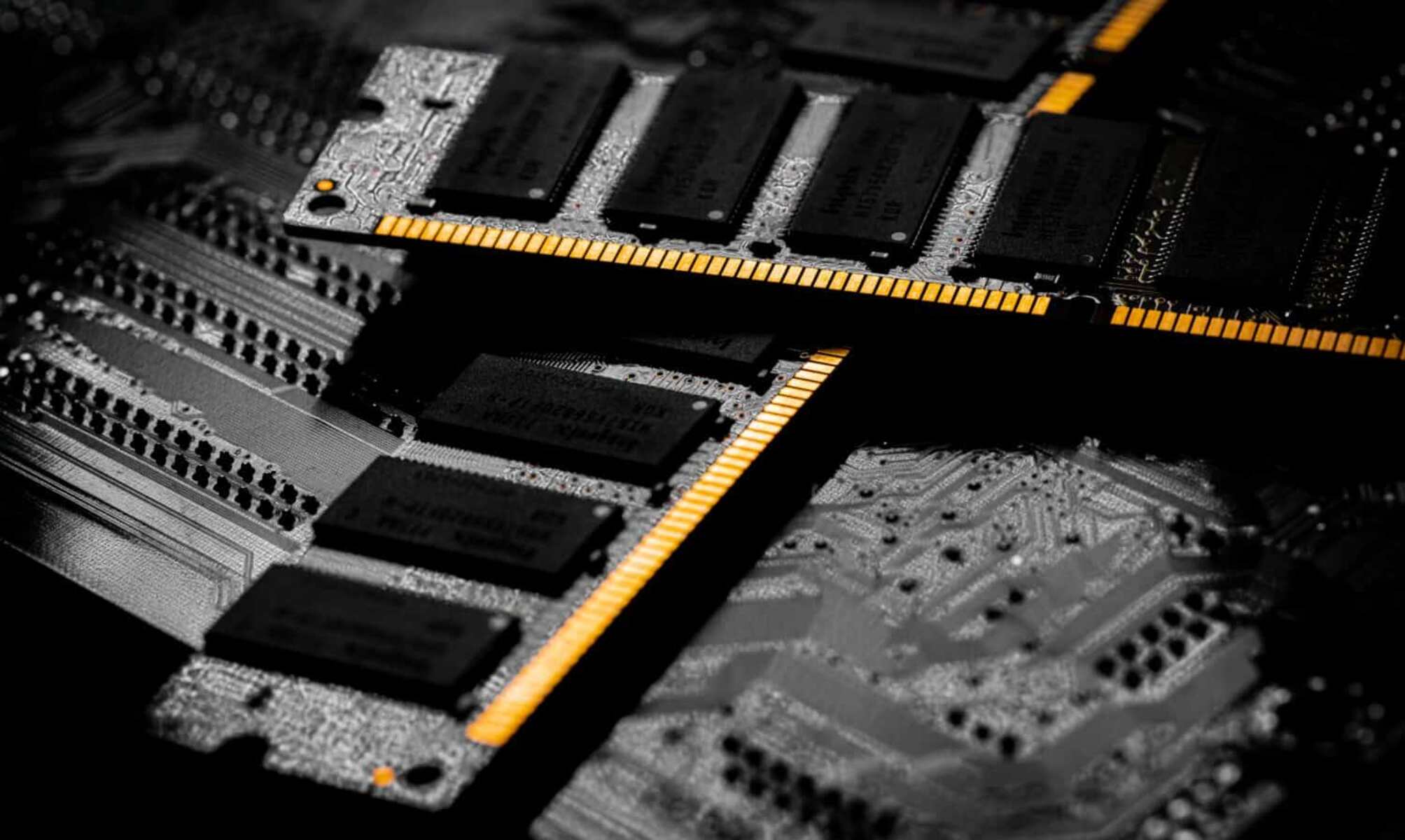Introduction
Welcome to the fascinating world of RAM timing! If you’ve ever wondered what makes your computer run faster or why certain RAM modules perform better than others, you’ve come to the right place. In this article, we’ll explore the concept of RAM timing and its crucial role in determining the overall performance of your system.
RAM, which stands for Random Access Memory, is a vital component in every computer. It serves as a temporary storage for data that is actively being accessed by the CPU. Faster RAM can lead to improved multitasking capabilities, faster data access, and smoother overall system performance.
While many factors contribute to RAM performance, timing plays a critical role. RAM timing refers to the various delays and intervals that occur during data transfer within the memory module. Understanding RAM timing can help you make informed decisions when choosing the right RAM for your needs, as well as optimizing performance through overclocking.
Throughout this article, we’ll explore the different aspects of RAM timing, including key terms such as CAS latency (CL), Row Address Strobe (RAS) to Column Address Strobe (CAS) Delay (tRCD), Row Precharge Time (tRP), Row Active Time (tRAS), and Command Rate (CR). We’ll also delve into how these timings affect RAM performance and guide you on selecting the most suitable timing settings for your system.
Buckle up and get ready to dive into the exciting world of RAM timing. By the end of this article, you’ll have a solid understanding of how timing impacts RAM performance and gain the knowledge needed to optimize your system for peak efficiency.
What Is RAM?
Before we delve into the intricacies of RAM timing, let’s start with the basics. RAM, short for Random Access Memory, is a fundamental component of any computer system. It is essentially the working memory of your computer, storing data that the CPU needs to access quickly and frequently.
Unlike your computer’s hard drive, which stores data in a non-volatile manner, RAM is volatile memory. This means that its contents are lost when the computer is powered off or restarted. RAM provides a fast and temporary storage solution to facilitate the smooth execution of programs and tasks.
Think of RAM as a scratchpad, where the CPU can write and read data quickly. Instead of fetching data from the slower hard drive or solid-state drive (SSD), which would significantly hamper performance, the CPU retrieves data from RAM, where it can be accessed in nanoseconds.
RAM comes in various types, with DDR4 being the most common standard today. The capacity of RAM modules can range from a few gigabytes to several terabytes, depending on the needs of the computer system.
One crucial aspect of RAM is its speed, which is often measured in megahertz (MHz) or gigahertz (GHz). Higher-speed RAM allows for quicker data transfers, resulting in improved system performance. However, the speed of RAM is not the only factor influencing its performance. Timing also plays a critical role.
Now that we have a clear understanding of what RAM is and its role in a computer system, let’s dive deeper into the importance of timing and how it impacts RAM performance.
The Role of Timing in RAM
Timing is a critical factor that affects the overall performance and efficiency of RAM. It refers to the various delays and intervals that occur during data transfer within the memory module. Each timing parameter has a specific role in coordinating and synchronizing the flow of data, ensuring smooth communication between the CPU and RAM.
The primary objective of timing in RAM is to ensure that data is transferred accurately and efficiently. Think of it as a carefully choreographed dance where each participant needs to make their move at the right time for the performance to be flawless.
By optimizing the timing parameters, you can reduce the time it takes for the CPU to access data from RAM, resulting in improved system responsiveness and performance. On the other hand, poor or mismatched timing settings can lead to data corruption, slower data transfers, and decreased overall system efficiency.
The key timing parameters in RAM include CAS latency (CL), Row Address Strobe (RAS) to Column Address Strobe (CAS) Delay (tRCD), Row Precharge Time (tRP), Row Active Time (tRAS), and Command Rate (CR). Let’s take a closer look at each of them:
- CAS Latency (CL): This refers to the delay between when the memory controller requests data from RAM and when it is available. Lower CAS latency values indicate faster access times.
- Row Address Strobe to Column Address Strobe Delay (tRCD): This represents the time it takes for the memory controller to switch the active row in RAM and access a specific column of data from that row. A smaller tRCD value results in faster data access.
- Row Precharge Time (tRP): This timing parameter determines how long the memory controller must wait between finishing the transfer of data from one row and initiating the transfer to another row. A shorter tRP value allows for faster switching between rows.
- Row Active Time (tRAS): This represents the minimum time that a row must remain active before it can be deactivated or precharged. Shorter tRAS values lead to faster performance.
- Command Rate (CR): The command rate determines the timing of certain commands sent to the RAM. A lower command rate offers better performance, but not all RAM modules support it.
Optimizing these timing parameters can have a significant impact on RAM performance. It’s important to note that not all RAM modules allow for extensive timing adjustments, as this depends on the specific model and manufacturer. However, for those who delve into overclocking, adjusting RAM timing becomes a crucial aspect of maximizing performance.
Now that we’ve covered the role of timing in RAM, let’s dive into each timing parameter in more detail to understand how they affect performance and how to choose the right timing for your system.
Understanding RAM Timing
RAM timing can seem complex at first, but with a little patience and understanding, you can demystify the various timing parameters and their impact on performance. Let’s take a closer look at each timing parameter and what it represents:
- CAS Latency (CL): CAS latency is one of the most important timing parameters. It measures the delay between the memory controller requesting data and the data being available. A lower CL value indicates faster access times.
- Row Address Strobe to Column Address Strobe Delay (tRCD): This timing parameter determines the delay between activating a row in RAM and accessing a specific column within that row. A smaller tRCD value means faster data access.
- Row Precharge Time (tRP): tRP represents the time required for the memory controller to move from one row to another. It indicates how long the memory controller has to wait between completing the transfer of data from one row and initiating the transfer to another row. A shorter tRP value allows for faster switching between rows.
- Row Active Time (tRAS): tRAS represents the minimum time that a row must remain active before it can be deactivated or precharged. A shorter tRAS value leads to faster performance, as it allows for quicker access to data within the row.
- Command Rate (CR): The command rate determines the timing of certain commands sent to the RAM. A lower CR value offers better performance, but not all RAM modules support it.
Understanding these timing parameters is crucial for optimizing RAM performance. Lower values generally result in faster performance, but it’s important to note that not all RAM modules allow for extensive timing adjustments. Some modules may have fixed timing settings that cannot be modified.
When choosing RAM for your system, it’s essential to consider your computer’s motherboard and its compatibility with different RAM modules and timing settings. Checking the motherboard’s specifications and consulting the manufacturer’s guidelines can help determine which RAM modules and timing settings are supported.
Additionally, it’s important to maintain a balance between timing settings and overall system stability. While lower values can offer better performance, they can also increase the risk of system instability or crashes if pushed too far. It’s recommended to gradually adjust timing parameters and run stability tests to ensure optimal performance without compromising system reliability.
Now that we have a better understanding of the various timing parameters in RAM, let’s explore how these timings affect the performance of the RAM module and how to choose the right timing for your system.
CAS Latency (CL)
CAS latency (CL) is a crucial timing parameter that significantly impacts the performance of RAM. It measures the delay between when the memory controller requests data from RAM and when the data becomes available for access. In simple terms, CAS latency represents the number of clock cycles it takes for the RAM to respond to a memory request.
CAS latency is expressed as a number, such as CL14 or CL16, where a lower value indicates faster access times. For example, a RAM module with a CAS latency of CL14 will have a faster response time than a module with a CAS latency of CL16.
A lower CAS latency value means that the RAM can retrieve data more quickly, resulting in shorter delays when the CPU needs to access information stored in RAM. This can lead to improved system responsiveness and faster execution of tasks.
However, it’s important to note that CAS latency is not the only factor to consider when evaluating RAM performance. The clock speed of the RAM module, measured in megahertz (MHz) or gigahertz (GHz), also plays a significant role. While a lower CAS latency can reduce delays in accessing data, a higher clock speed allows for faster data transfer within the RAM module.
When choosing RAM, it’s often necessary to strike a balance between CAS latency and clock speed. Higher clock speeds can compensate for slightly higher CAS latencies, while lower CAS latencies can help mitigate the impact of lower clock speeds.
Ultimately, the best choice will depend on the specific needs of your system and the tasks it will perform. For demanding applications such as gaming or video editing, a combination of low CAS latency and high clock speed is recommended to maximize performance. On the other hand, for more basic computing tasks, a balance between CAS latency and cost-effectiveness may be more appropriate.
One important consideration when it comes to CAS latency is that not all RAM modules support flexible adjustments. Some modules may have fixed CAS latency settings that cannot be modified, limiting the ability to optimize performance through timing adjustments.
In summary, CAS latency (CL) is a critical timing parameter that affects RAM performance by determining the delay between memory requests and data availability. Lower CAS latency values indicate faster access times. When selecting RAM, it’s essential to consider the balance between CAS latency and clock speed to ensure optimal performance based on your specific requirements.
Row Address Strobe (RAS) to Column Address Strobe (CAS) Delay (tRCD)
The Row Address Strobe (RAS) to Column Address Strobe (CAS) Delay, abbreviated as tRCD, is an important timing parameter within RAM that affects its performance. It measures the time it takes for the memory controller to switch the active row in RAM and access a specific column of data within that row.
tRCD represents the delay between activating a row and selecting a specific column, establishing how long the memory controller has to wait before it can access data from the selected column. A smaller tRCD value indicates a shorter delay and faster data access.
When the CPU sends a read or write command to the RAM module, it specifies a particular row and column address. The tRCD timing ensures that the correct data is fetched from the designated row and column positions within the RAM module. If the tRCD value is too high, it can cause delays in retrieving the required data, impacting system performance.
Optimizing the tRCD timing can result in faster memory access, improving overall system responsiveness and reducing latencies. However, it is important to note that not all RAM modules support extensive adjustments to the tRCD timing. Some modules may have fixed tRCD settings which cannot be modified, limiting the optimization opportunities.
Choosing the appropriate tRCD value depends on various factors, including the specific motherboard, RAM module compatibility, and overall system requirements. It is recommended to consult the motherboard’s specifications or the RAM manufacturer’s guidelines for the supported tRCD values.
It’s worth noting that while a smaller tRCD value generally leads to improved performance, excessively tight timings can cause instability and system errors. It is crucial to find a balance between performance optimization and system stability.
In situations where higher RAM speeds are desired, it is essential to ensure that the tRCD value remains compatible with the increased frequency. In some cases, increasing RAM speed may require slightly loosening the tRCD timing to maintain stability.
In summary, tRCD is a critical timing parameter in RAM that determines the delay between activating a row and selecting a specific column for data access. A lower tRCD value results in faster data retrieval. When optimizing tRCD timing, it is important to consider motherboard compatibility, RAM module capabilities, and system stability to strike the right balance between performance and reliability.
Row Precharge Time (tRP)
The Row Precharge Time (tRP) is a timing parameter that plays a crucial role in the performance of RAM. It represents the amount of time the memory controller must wait between completing the transfer of data from one row in the RAM module and initiating the transfer to another row.
tRP ensures that the memory controller provides enough time for the current row to precharge, which means it returns to an idle state before accessing data from the next row. It allows for a smooth transition between rows and prevents data corruption or interference.
A shorter tRP value indicates a reduced waiting time, allowing the memory controller to swiftly move from one row to another. This shorter delay results in faster access to data stored in different rows of the RAM module. As a result, the system experiences improved performance and responsiveness.
When selecting RAM, it’s worth noting that not all modules support extensive adjustments to the tRP timing. Some RAM modules may have fixed tRP values that cannot be modified, restricting the ability to optimize timing parameters for specific system requirements.
However, for those modules that do allow adjustments, finding the optimal tRP setting is crucial. Pushing the tRP value too low can lead to instability and system errors, while setting it too high may result in slower memory access and decreased performance.
It’s essential to strike a balance between performance optimization and system stability when adjusting tRP. Stress-testing the system with various tRP settings can help determine the highest value that maintains stability without sacrificing too much performance.
Furthermore, it’s important to consider the compatibility of tRP timing with other timing parameters and the RAM module’s specified speed. Some RAM modules may require slightly looser tRP timings to maintain stability when running at higher speeds.
In summary, tRP is a crucial timing parameter in RAM that determines the delay between completing data transfer from one row and initiating the transfer to another row. A shorter tRP value results in faster transitions between rows and improved data access. However, striking the ideal balance between performance and stability is essential when adjusting tRP timing.
Row Active Time (tRAS)
The Row Active Time (tRAS) is a critical timing parameter in RAM that significantly affects memory performance. It represents the minimum amount of time that a row in the memory module must remain active before it can be deactivated or precharged.
tRAS ensures that the memory controller provides enough time for the data in the active row to be accessed or stored before transitioning to another row. During tRAS, the memory controller can read or write data within the active row with low latency, enabling efficient data retrieval.
A shorter tRAS value indicates a reduced minimum time for the active row, allowing the memory controller to quickly transition between rows. This shorter duration facilitates faster access to data stored within the rows of the RAM module, thereby improving system performance.
When selecting RAM modules, it’s important to verify the compatibility of tRAS values with the specific motherboard and CPU. Some motherboards may have limitations on the minimum tRAS value that can be used, while others may offer more flexible options for adjustment.
While lowering tRAS can result in improved performance, it’s crucial to find a balance that ensures system stability. Setting tRAS too low can lead to data corruption, system crashes, or instability. It’s recommended to gradually adjust tRAS while stress-testing the system to find the optimal value that provides the desired performance boost without compromising stability.
It’s worth noting that tRAS is dependent on various factors, including the RAM module speed, the active row’s size, and the overall system configuration. Higher RAM speeds or larger row sizes may require slightly longer tRAS timings to maintain stability.
Understanding the impact of tRAS and its compatibility with other timing parameters is crucial for optimizing RAM performance. By finding the appropriate balance between tRAS and other timing parameters, it’s possible to maximize memory efficiency and achieve optimal system responsiveness.
In summary, tRAS is a vital timing parameter in RAM, representing the minimum time that an active row must remain open before it can be deactivated or precharged. A shorter tRAS value allows for faster transitions between rows, enabling improved data access and system performance. However, it’s essential to maintain stability by finding a suitable tRAS value that is compatible with the system’s configuration and other timing parameters.
Command Rate (CR)
The Command Rate (CR) is a timing parameter in RAM that plays a significant role in memory performance. It determines the timing of certain commands sent to the RAM module. Specifically, it represents the delay between when the memory controller issues a command and when the RAM module responds.
CR is expressed as a ratio, such as 1T or 2T, where the “T” stands for clock cycle time. A lower CR value indicates faster responsiveness and better performance. For example, RAM with a 1T command rate offers better performance than RAM with a 2T command rate.
CR impacts the stability and reliability of your system. Setting a lower CR can improve system performance by reducing delays in command processing. However, not all RAM modules support flexible adjustment of the command rate, as it depends on the memory module’s specifications and the motherboard compatibility.
When selecting RAM modules, it’s important to ensure that the motherboard supports the desired command rate values. Some motherboards may have limitations on the minimum command rate that can be used.
It’s worth noting that adjusting the command rate requires careful consideration and stability testing. Aggressively setting the command rate too low can lead to system instabilities, crashes, or data corruption. Therefore, it’s recommended to gradually adjust the command rate while running stability tests to find the optimal balance between performance and system reliability.
Furthermore, it’s essential to consider the impact of other timing parameters when adjusting the command rate. Modifying the command rate may require adjustments to other timings, such as CAS latency (CL), to maintain stability and prevent timing conflicts within the RAM module.
Overall, the command rate is an important timing parameter that can impact RAM performance. While lower command rates offer better performance, it’s crucial to ensure compatibility with the RAM module, motherboard, and other timing parameters. Finding the optimal command rate setting can lead to improved system responsiveness and memory performance.
In summary, the command rate (CR) is a timing parameter in RAM that determines the delay between command issuance and module response. Lower command rates can enhance system performance, but it’s essential to verify compatibility and conduct stability testing. Adjusting the command rate should be done cautiously, considering other timing parameters to maintain system stability and optimize RAM performance.
How Timing Affects RAM Performance
The timing parameters in RAM, such as CAS latency (CL), Row Address Strobe to Column Address Strobe Delay (tRCD), Row Precharge Time (tRP), Row Active Time (tRAS), and Command Rate (CR), all have a significant impact on the overall performance of RAM. By optimizing these timing settings, you can enhance the speed and responsiveness of your system.
Lower values for timing parameters generally result in faster access and transfer of data within the RAM module. For example, a lower CAS latency indicates quicker access times, allowing the CPU to retrieve data from RAM more efficiently. Similarly, shorter tRCD, tRP, and tRAS values enable faster switching between rows and columns, reducing delays in data retrieval and storage.
Adjusting the command rate (CR) can also play a crucial role in RAM performance. Lower command rates result in faster command processing, allowing the memory controller to communicate with the RAM module more efficiently.
By optimizing these timing parameters, you can achieve improved system responsiveness, faster application loading times, and smoother multitasking capabilities. Tasks that involve heavy data processing, such as gaming, video editing, or running virtual machines, can benefit greatly from optimized RAM timing settings.
It’s worth noting that the impact of timing adjustments on overall performance can vary depending on the specific system configuration and the workload being performed. While optimizing timing settings can yield noticeable improvements, the exact impact may vary from system to system.
Moreover, it’s crucial to find the right balance between performance and system stability when adjusting timing parameters. Overly aggressive timing adjustments can result in system instabilities, crashes, or data corruption. For this reason, it is recommended to gradually test and validate stability after making any timing adjustments.
Overall, timing plays a critical role in RAM performance. By understanding and optimizing the various timing parameters, you can unlock the full potential of your RAM module and enhance the overall efficiency and responsiveness of your computer system.
Choosing the Right Timing for RAM
Choosing the right timing for your RAM is crucial for maximizing performance and ensuring system stability. By selecting the optimal timing settings, you can optimize data access, transfer speeds, and overall system responsiveness. Here are some considerations to keep in mind when choosing the right timing for your RAM:
1. Compatibility: Ensure that the timing settings you choose are supported by your motherboard and RAM module. Consult the motherboard’s specifications and the RAM manufacturer’s guidelines to determine the supported timing values.
2. Workload: Consider the type of tasks you typically perform on your system. If you engage in resource-intensive activities like gaming, video editing, or 3D rendering, you may benefit from lower timing values for faster data access and processing. For general computing, a balance between performance and stability may be more appropriate.
3. System Stability: Adjusting timing parameters to their lowest values may provide performance gains, but it can also introduce instability if pushed too far. Gradually test and validate system stability at each adjustment to ensure that the system remains reliable under different workloads and conditions.
4. Budget: Higher-performing RAM modules with tighter timing settings often come at a higher cost. Consider your budget and prioritize your requirements to strike the right balance between performance and cost-effectiveness.
5. Manufacturer Recommendations: Some RAM manufacturers provide recommended timing settings or “XMP profiles” for their modules. These profiles are pre-configured settings designed to offer optimal performance and stability. Refer to the manufacturer’s recommendations and test these profiles to see if they meet your requirements.
6. Overclocking: Overclocking RAM can offer performance benefits, but it also increases the risk of instability. When overclocking, pay close attention to timing settings and ensure they remain within safe and stable limits for your specific RAM module and system configuration.
Remember that finding the right timing for your RAM is a matter of balance and trade-offs. It’s important to consider compatibility, workload, stability, budget, and manufacturer recommendations to choose the optimal timing settings for your specific needs. Conduct thorough testing and monitoring to ensure stability and reliability after making any timing adjustments.
Overclocking and RAM Timing
Overclocking RAM is a practice that involves increasing the clock speed and adjusting the timing parameters of the RAM module beyond their default settings. It aims to extract additional performance from the RAM, potentially resulting in faster data access and improved overall system responsiveness.
One aspect of overclocking RAM involves fine-tuning the timing parameters, such as CAS latency (CL), Row Address Strobe to Column Address Strobe Delay (tRCD), Row Precharge Time (tRP), Row Active Time (tRAS), and Command Rate (CR). By modifying these parameters, you can achieve faster data transfers and reduced latency.
When overclocking RAM, it’s essential to understand the implications and potential risks. Overclocking can put additional stress on the RAM module, increasing power consumption and generating more heat. Excessive overclocking may result in system instability, crashes, or even permanent damage to the RAM module.
Timing adjustments during RAM overclocking require careful consideration. Lowering timing values can lead to faster data access and improved performance, but aggressive adjustments may compromise stability. It’s essential to test and validate stability after each timing adjustment to ensure the overclocked RAM remains reliable under different workloads and conditions.
Additionally, it’s important to consider the compatibility of the RAM overclock with other system components. Overclocking the RAM may require adjustments to other settings, such as the CPU frequency or voltage. Ensuring compatibility and stability across all components is crucial for a successful and reliable overclocking experience.
It’s worth noting that not all RAM modules are created equal when it comes to overclocking. Some modules are designed to handle higher clock speeds and tighter timings more effectively than others. It’s recommended to consult the RAM manufacturer’s documentation and user forums to determine the overclocking potential and limitations of your specific RAM model.
Furthermore, proper cooling and adequate power supply are essential for stable RAM overclocking. High-performance RAM modules can generate more heat, so ensuring sufficient cooling through improved airflow or additional cooling measures is vital to prevent overheating and performance degradation.
Overclocking RAM can offer substantial performance gains for tasks that are memory-intensive, such as gaming, video editing, or 3D rendering. However, it requires careful attention to stability, compatibility, and proper cooling. If done correctly, overclocking RAM can provide noticeable performance improvements and enhance the overall user experience.
Conclusion
RAM timing is a critical aspect of optimizing performance and efficiency in any computer system. The timing parameters, including CAS latency (CL), Row Address Strobe to Column Address Strobe Delay (tRCD), Row Precharge Time (tRP), Row Active Time (tRAS), and Command Rate (CR), play a vital role in determining how quickly data can be accessed and transferred within the RAM module.
By understanding and adjusting these timing parameters, you can optimize RAM performance and enhance system responsiveness. Lower values for timing parameters generally result in faster data access and reduced latency, improving overall system performance. However, finding the right balance between performance and stability is crucial to ensure the reliability and integrity of your computer system.
When choosing RAM modules, consider factors such as compatibility, workload requirements, system stability, and budget. Consult the motherboard’s specifications, RAM manufacturer guidelines, and compatibility lists to ensure the timing settings you choose are supported and offer the desired performance benefits.
Overclocking RAM can provide additional performance gains but must be approached with caution. It requires careful consideration of stability, compatibility, proper cooling, and the limitations of your specific RAM model. Stress-testing and monitoring the system after making any timing adjustments or overclocking attempts is crucial to maintain stability and reliability.
Ultimately, optimizing RAM timing is an ongoing process that involves testing, experimentation, and finding the right balance for your specific system. By fine-tuning the timing parameters, you can unlock the full potential of your RAM and enjoy improved system performance, quicker data access, and enhanced multitasking capabilities.
So, take the time to explore and experiment with your RAM timing settings, keeping in mind the considerations mentioned in this article. Whether it’s for gaming, content creation, or everyday computing tasks, optimizing RAM timing can make a noticeable difference in the overall performance and responsiveness of your computer system.









